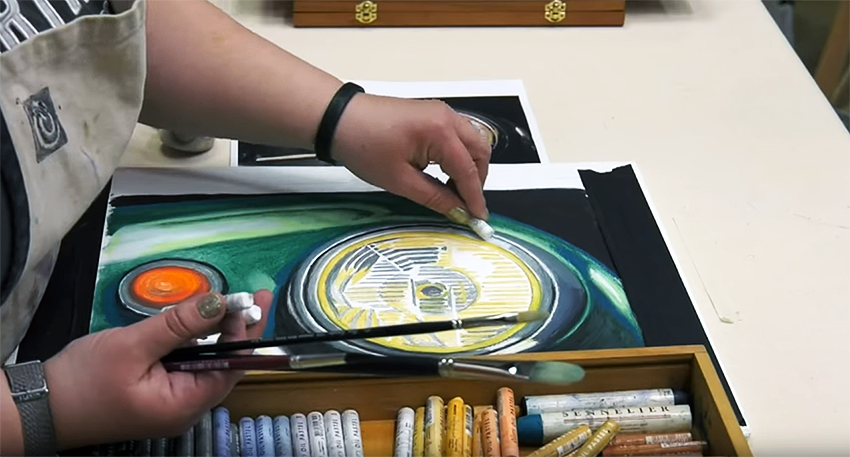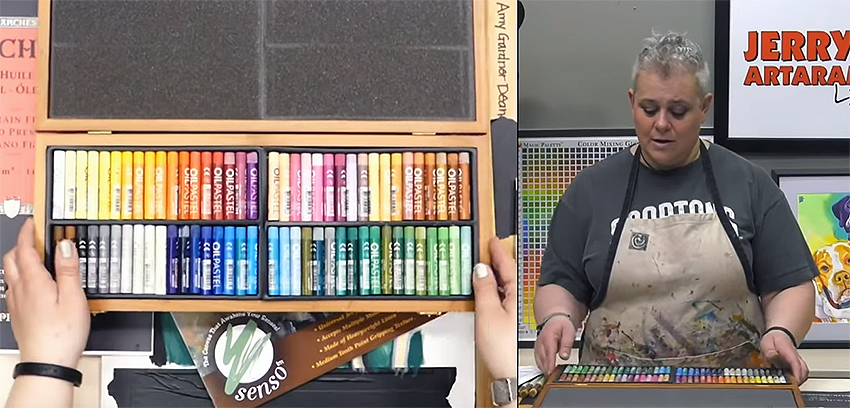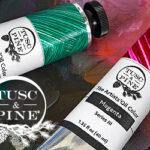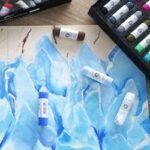Create An Oil Pastel Painting: Step By Step & Video
Create An Oil Pastel Painting, Step-By-Step How To Video
Featuring: Mungyo Gallery Oil Pastels
Did you love that feeling of crayons in your hand as a kid? That freedom and feel of smooth application of color in your hand, where tight detail isn’t a thought seems just a lovely memory, right?
Well what if you could harness that same feeling, but add archivability and tight detail if you wanted it, with the ability to unleash it in a fine art application?
This episode focuses on the Oil Pastel. It’s not just for third graders, anymore– the quality and color has come a long way, with a mature upgrade.
Step-by-step oil pastel
Join us in this episode where we create and complete a step-by-step oil pastel in stages, featuring Mungyo Oil Pastels, and bring out your inner kid!
Jerry’s LIVE Episode #95 (VIDEO)
I’m gonna go ahead and go over the products really quickly that we’re gonna use for this episode.
Oil Sticks and Pastels
Oil sticks and oil pastels are two different art mediums. Oil sticks are made up of oil paint and wax, whereas oil pastels are made of mineral oil and wax. The main difference between the two is that oil sticks dry over time, while oil pastels never dry. In this discussion, we will explore the differences between the two mediums and how to work with them.
See recommended resources: Pastels, Oil Painting Papers, Oil Painting Brushes, Oil Paints
Papers
Here’s what we have for products today. First up is the Arches oil paper, which is a great value pack. It comes with two sheets and an additional third one for free. The price is ridiculously low, making it a steal. Plus, the paper itself is quite large. The paper size is 22 inches by 30 inches, similar to the size of watercolor paper. You have the option to purchase it and divide it into smaller pieces, or use it as a large sheet.
“Why would you want to use oil pastels on this paper?” you may ask. The reason is that this paper is specifically designed for oil painting. Although it is not gessoed, it has sizing that protects the cotton from the acid in oil.
Solvents
If you plan on doing oil painting with oil pastels, you may need to thin them out using solvents. This is where a protective coating on the paper comes in handy, as it prevents the solvent from damaging the paper. By using a paper with a protective coating, your work will be archival and will last long-term, even if you use solvents to thin your oil pastels.
Brushes
When working with oil pastels, you don’t need a fine brush. Regular hog bristle brushes will work just fine for this purpose.
Easels
“I occasionally work on an easel, but sometimes I prefer to work on a flat surface. The advantage of using these methods is that it allows me to step back from my work and blend in some solvent.”
Supply List: Oil Pastel Painting, Step-By-Step
“When using this medium for the first time, there are some things you can do to practice.
The great thing about it is that you can use it for plein air painting without needing solvents.”
Going around and knocking this yellow back it was too bright.
“I am highlighting the chrome on the car with a white color that has a nice edge to it. However, I am not applying too much pressure as I don’t want it to appear too bright since it’s not a part of the car.”
If you want to remove excess color from a surface, you can use a paper towel or an old t-shirt that you can dispose of later. This will prevent you from inadvertently transferring the color to another surface.
Some Questions Asked During the Show
Q: Would Gamsol be a proper solvent for this?
A: There’s people that use Gamsol. Gamsol is still a petroleum distillate. So work with it and just make sure that it doesn’t leave kind of greasy spots on your
Q: Can use the Chelsea Citrus Essence Brush Cleaner that of the lavender spike oil essence?
A: Yes, you can. Those are just much weaker versions because the lavender essence is a lot stronger because it’s meant to be a solvent where you can make varnishes and things like that with it.
Q: Can Workable Fixative be used with this to stop smearing?
A: Workable Fixative just kind of adheres dust down. That’s why you use it with graphite and charcoal and things like that. Oil sticks have no dust, just pigment so fixative is not going to do anything to help it. You just need to practice some techniques where you’re not kind of putting your hand down and getting in the way where you’re gonna smear it.








